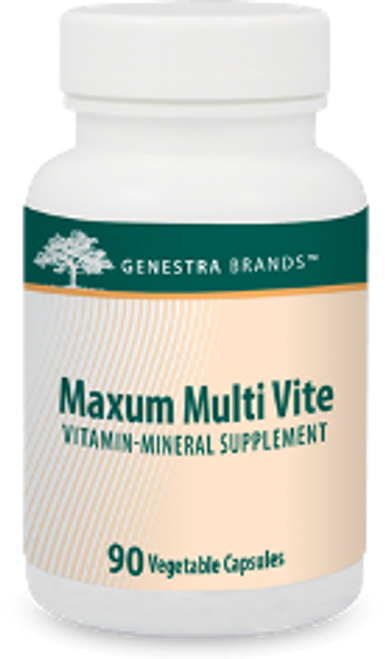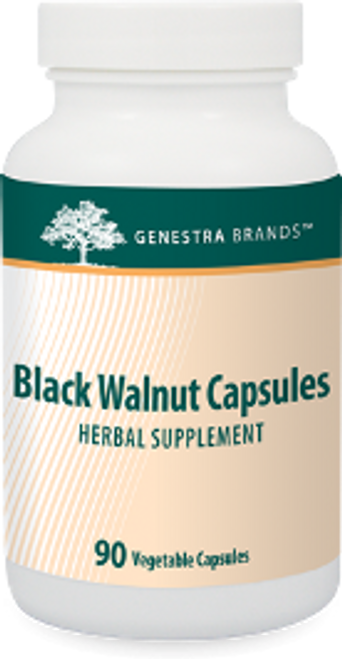Product Overview
Genestra Orti C- 90 Vegetable Capsules
• Vitamin C formulation in capsules • Source of antioxidants for the maintenance of good health (1) • With bioflavonoids • Hesperidin and Rutin • Ideal for vegans • Convenient capsule format increases patient compliance
Orti C is a Vitamin C formulation combined with bioflavonoids and green tea. Orti C provides vitamin C as a source of antioxidant for the maintenance of good health. Helps in the development and maintenance of bones, cartilage, teeth and gums; helps the body to metabolize carbohydrates, fats and proteins; helps in tissue and connective tissue formation and in wound healing; helps to maintain healthy skin, immune function and proper muscle function; helps to prevent vitamin C deficiency (2). The capsules are 100% pure vegetable-sourced.
Additional product info: Epidemiological studies have shown that competitors in ultrarnarathon (> 42 km) footraces report a significantly higher incidence of symptoms of upper-respiratory-tract (URT) infections in the immediate postrace period when compared with the incidence among sedentary control subjects?during the same time period. A double-blind placebo-controlled study determined whether daily supplementation with 600 mg vitamin C for 21 days before the marathon, would reduce the incidence of symptoms of URT infections after participation in a competitive ultramarathon race. Symptoms of URT infections were monitored for 14 days after the race. Sixty-eight percent of the runners in the placebo group reported the development of symptoms of URT infection after the race; this was significantly more than that reported by the vitamin C-supplemented group (33%). The duration and severity of symptoms of URT infections reported in the vitamin C-supplemented nonrunning control group was also significantly less than in the nonrunning control group receiving the placebo. This study provides evidence that vitamin C supplementation may enhance resistance to the postrace URT infections that occur commonly in competitive ultramarathon runners and may reduce the severity of such infections in those who are sedentary (3). The effects of megadose Vitamin C in preventing and relieving cold and flu symptoms in a students test group, compared with a control group, were studied. Those in the control population reporting symptoms were treated with pain relievers and decongestants, whereas those in the test population reporting symptoms were treated with hourly doses of 1000 mg of Vitamin C for the first 6 hours and then 3 times daily thereafter. Those not reporting symptoms in the test group were also administered 1000-mg doses 3 times daily. Overall, reported flu and cold symptoms in the test group decreased 85% compared with the control group after the administration of megadose Vitamin C. Vitamin C in megadoses administered before or after the appearance of cold and flu symptoms relieved and prevented the symptoms in the test population compared with the control group (4). Adequate zinc status is critical for immune function. Zinc deficiency reduces generation of T cells, depresses humoral and cell-mediated immunity, leads to lymphopenia and thymic atrophy, and increases the frequency and number of infections. A prospective, randomized, controlled clinical trial was conducted involving 231 HIV-infected adults with low plasma zinc levels, who were randomly assigned to receive zinc (12 mg of elemental zinc for women and 15 mg for men) or placebo for 18 months. Zinc supplementation given to HIV-infected adults resulted in a 4-fold decrease in the likelihood of immunological failure, defined as a decrease of CD4+ cell count to <200 cells/mm3, after 18 months of use, compared with placebo. Zinc supplementation also significantly reduced diarrhea, compared with placebo (5). Flavonoids are polyphenolic compounds that occur in most foods of plant origin and are significant though minor constituents of the human diet (6). Bioflavonoids, which include hesperidin, citrin, rutin, flavones, flavonols, catechin and quercetin, were formerly called “Vitamin P”, and were found to be essential components in improving the permeability and integrity of the capillary linings (7). Flavonoids possess antioxidants properties while being able to modulate a number of biological functions such as anti-inflammatory and anti-microbial activities (8). Six weeks' rutin supplementation (500 mg daily) significantly elevated the levels of three plasma flavonoids (quercetin. kaempferol and isorhamnetin) (9).
Green tea (GT) and black tea (BT) are both derived from the tea leaves of Camellia sinensis. GT is manufactured by drying the leaves of C. sinensis. The manufacture of BT requires an additional fermentation step, which generates theaflavins and thearubigins. Theaflavins and thearubigins are oligomeric polyphenolic compounds synthesized from monomeric tea flavanol units. Tea flavanols are regarded as the biologically active constituents of tea. The main flavanols found in GT, and to a lesser extent in BT, are (-)-epigallocatechin-3- gallate (EGCG), (-)-epigallocatechin (EGC), (-)-epicatechin-3-gallate (ECG), and (-)-epicatechin (EC). EGCG is the most abundant and widely studied tea polyphenol. EGCG and ECG have the highest radical scavenging activity (10). Experimental studies have revealed that green tea catechins can prevent influenza infection in vitro, but clinical evidence has so far been inconclusive. A randomized, double-blind, 2-group parallel study was conducted to compare the effects of green tea catechins and theanine (catechin/theanine) capsules with those of placebo on the prevention of influenza for 5 months during the influenza season. The participants were asked to take 6 capsules per day, containing a total of 378 mg catechins (including 270 mg (-)-epigallocatechin gallate) and 210 mg theanine or placebo. The incidence of clinically defined influenza infection was significantly lower in the catechin/theanine group compared with the placebo group. The time for which the patient was free from clinically defined influenza infection was significantly different between the two groups (11). In 20 young healthy smokers, endothelial functions, defined by flow-mediated endothelium dependent vasodilation (FMD) of the brachial artery via ultrasound as well as the number of endothelial progenitor cells (EPCs) isolated from peripheral blood, were determined at baseline and at 2 weeks after green tea consumption (8 g/day). Circulating EPCs by flow cytometry and cultured EPCs increased rapidly at 2 weeks after green tea consumption. FMD was significantly improved after 2 weeks (12). Green Tea extracts providing up to 690 mg total catechins are a source of antioxidants for the maintenance of good health (13).
Magnesium (Mg) is the second most abundant intracellular cation in vertebrates. Mg ion is a critical cofactor in more than 300 enzymatic reactions involving energy metabolism, and protein and nucleic acid synthesis. Accordingly, Mg is essential for various normal tissue and organ functions. The primary source of Mg in humans is from the diets. The dietary Mg ion is absorbed in the intestine through both active and passive transport systems. Excessive Mg is rapidly excreted into the urine. During Mg deprivation, the kidney avidly conserves Mg and excretes virtually no Mg in the urine. Approximately half of the total Mg in the body of a normal adult human is present intracellularly in soft tissues, and the other half is found in bone, either as exchangeable, surface-bound, divalent cations, which may serve as a reservoir for maintaining normal extracellular Mg level, or as an integral component of the hydroxyapatite lattice in bone matrix, which may be released during bone resorption. Thus, in addition to the intestine and kidney, the bone is involved in Mg homeostasis. Past studies with Mg depletion in both humans and animals indicate that Mg may have key regulatory roles in bone and mineral metabolism. A study examined the effects of daily oral magnesium (Mg) supplementation on bone turnover in 12 young (27–36 yr old) healthy men. The study group received orally, for 30 days, 15 mmol Mg (Magnosolv powder, Asta Medica, containing 670 mg magnesium carbonate precipitate (equivalent to 169 mg Mg) and 342 mg magnesium oxide (equivalent to 196 mg)) daily in the early afternoon with 2-h fasting before and after Mg intake. Mg supplementation reduced levels of both serum bone formation and resorption biochemical markers after 1–5 days, consistent with the premise that Mg supplementation may have a suppressive effect on bone turnover rate. The study concludes that oral Mg supplementation may suppress bone turnover in young adults. Because increased bone turnover has been implicated as a significant etiological factor for bone loss, these findings raise the interesting possibility that oral Mg supplementation may have beneficial effects in reducing bone loss associated with high bone turnover, such as age-related osteoporosis (14). In another study, twenty postmenopausal women have been divided into two groups. Ten patients were given magnesium citrate (1,830 mg/day providing 205 mg elemental magnesium) orally for 30 days. Ten postmenopausal women of matching age, menopause duration, and BMI were recruited as the control group and followed without any medication. Thirty consecutive days of oral magnesium supplementation caused significantly decrease in serum iPTH levels in the Mg-supplemented group. Serum osteocalcin levels were significantly increased and urinary deoxypyridinoline levels were decreased in the Mg-supplemented group. This study has demonstrated that oral magnesium supplementation in postmenopausal osteoporotic women suppresses bone turnover (15).
Magnesium is involved in numerous processes that affect muscle function including oxygen uptake, energy production and electrolyte balance. Thus, the relationship between magnesium status and exercise has received significant research attention. This research has shown that exercise induces a redistribution of magnesium in the body to accommodate metabolic needs. There is evidence that marginal magnesium deficiency impairs exercise performance and amplifies the negative consequences of strenuous exercise (e.g., oxidative stress). Strenuous exercise apparently increases urinary and sweat losses that may increase magnesium requirements by 10-20%. Based on dietary surveys and recent human experiments, a magnesium intake less than 260 mg/day for male and 220 mg/day for female athletes may result in a magnesium-deficient status. Recent surveys also indicate that a significant number of individuals routinely have magnesium intakes that may result in a deficient status. Athletes participating in sports requiring weight control (e.g., wrestling, gymnastics) are apparently especially vulnerable to an inadequate magnesium status. Magnesium supplementation or increased dietary intake of magnesium will have beneficial effects on exercise performance in magnesium-deficient individuals. Magnesium supplementation of physically active individuals with adequate magnesium status has not been shown to enhance physical performance (16). The effects of magnesium supplementation on blood parameters were studied during a period of 4 wk in adult tae-kwon-do athletes at rest and exhaustion. Thirty healthy subjects of ages ranging in age from 18 to 22 yr were included in the study. The subjects were separated into three groups, as follows: Group 1 consisted of subjects who did not train receiving 10 mg/kg/d magnesium. Group 2 included subjects equally supplemented with magnesium and exercising 90-120 min/d for 5 d/wk. Group 3 were subject to the same exercise regime but did not receive magnesium supplements. The leukocyte count (WBC) was significantly higher in groups 1 and 2 than in the subjects who did not receive any supplements (p < 0.05). There were no significant differences in the WBC of the two groups under magnesium supplementation. The erythrocyte, hemoglobin, and trombocyte levels were significantly increased in all groups (p < 0.05), but the hematocrit levels did not show any differences between the groups although they were increased after supplementation and exercise. These results suggest that magnesium supplementation positively influences the performance of training athletes by increasing erythrocyte and hemoglobin levels (17).
Calcium and vitamin D are both essential for the development and maintenance of skeletal health. Calcium plays a vital role in neuromuscular function, many enzyme-mediated processes, blood clotting and in providing rigidity to the skeleton by virtue of its phosphate salts. Over 99% of the body’s calcium is stored in the bone, where, apart from providing mechanical strength, it serves as a mineral reservoir that can be drawn upon to maintain normal plasma calcium. Vitamin D is required to maintain normal blood levels of calcium and phosphate, which are in turn needed for the normal mineralization of bone, muscle contraction, nerve conduction and the general cellular functioning of all body cells. Vitamin D, derived from both endogenous (skin) and exogenous (diet) sources, is converted into 25OHD in the liver and then into 1,25(OH)2D in the kidneys. The latter metabolite controls calcium absorption. However, plasma 25OHD closely reflects vitamin D nutritional status, and because it is the substrate for the renal enzyme that produces 1,25(OH)2D, it could have mainly an indirect and also a direct effect on calcium absorption. A vitamin D shortage would reduce the intestinal absorption of calcium, which could worsen if the diet is deficient of this element. Osteoporosis and its clinical consequence, fragility fractures, are now recognized as major public health problems. Bone mass declines and the risk of fractures increases as people age, especially postmenopausal women. An adequate intake of calcium and vitamin D, including supplementation, has been advocated as a universal primary intervention in the prevention and treatment of high-risk patients. Evidence shows that there is still a high proportion of people with inappropriately low calcium and vitamin D intake and serum levels. For selective groups of people, such as the elderly (frequently older than 70 years), those with low solar exposure and in generally poor or inadequate nutritional condition, guaranteeing a daily intake of at least 1 g of calcium and 700–800 IU of vitamin D with supplements would have beneficial effects on bone health. In those individuals with a high risk of osteoporotic fracture, calcium and vitamin D supplements are necessary but frequently insufficient (18). The Women’s Health Initiative (WHI) clinical trial randomly assigned 36,282 postmenopausal women to receive 1000 mg of elemental calcium as calcium carbonate with 400 IU of vitamin D3 daily or placebo for an average follow-up period of 7.0 years. Significantly higher hip bone density but a non-significant reduction (12 percent) in the rate of hip fracture among those assigned to calcium with vitamin D were observed (19). A recent review discusses vitamin D status and supplementation when treating patients with osteoporosis in relation to risks and prevention of falls and fractures. The authors conclude that poor vitamin D status and low calcium intake are important determinates for osteoporosis and fracture risk. Based on evidence from literature, adequate supplementation with at least 700 IU of vitamin D, preferably cholecalciferol, is required for improving physical function and prevention of falls and fractures. Additional calcium supplementation may be considered when dietary calcium intake is below 700 mg/day, with a supplementation dose that leads to a maximum total daily calcium intake of 1000 to 1200 mg (20).
Increasing evidence suggests that a higher potassium intake may have beneficial effects on endothelial function, arterial compliance, left ventricular (LV) mass and function, and bone mineral density. To determine the effects of potassium supplementation on endothelial function, cardiovascular risk factors, and bone turnover and to compare potassium chloride with potassium bicarbonate, a 12-week randomized, double-blind, placebo-controlled crossover trial in 42 individuals, was carried out. Participants were allocated in random order to take 10 placebo capsules per day for 4 weeks, 10 potassium bicarbonate capsules per day (potassium: 6.4 mmol per capsule) for 4 weeks, or 10 potassium chloride capsules per day (potassium: 6.4 mmol per capsule) for 4 weeks. The study demonstrated that, in individuals who were already on a relatively low-salt and high-potassium intake, both potassium chloride and potassium bicarbonate significantly improved endothelial function. In addition, potassium chloride reduced 24-hour urinary albumin, and potassium bicarbonate decreased 24-hour urinary calcium, calcium:creatinine ratio, and plasma ?CTX, a marker of bone resorption. These results indicate that an increase in potassium intake has beneficial effects on the cardiovascular system and bone health. The 2 potassium salts appear to have a similar effect on most of the cardiovascular parameters studied; however, there are differences between them in the effects on calcium and bone metabolism and urinary albumin excretion (21).
Other ingredients: Hypromellose, magnesium silicate, magnesium stearate, silica








